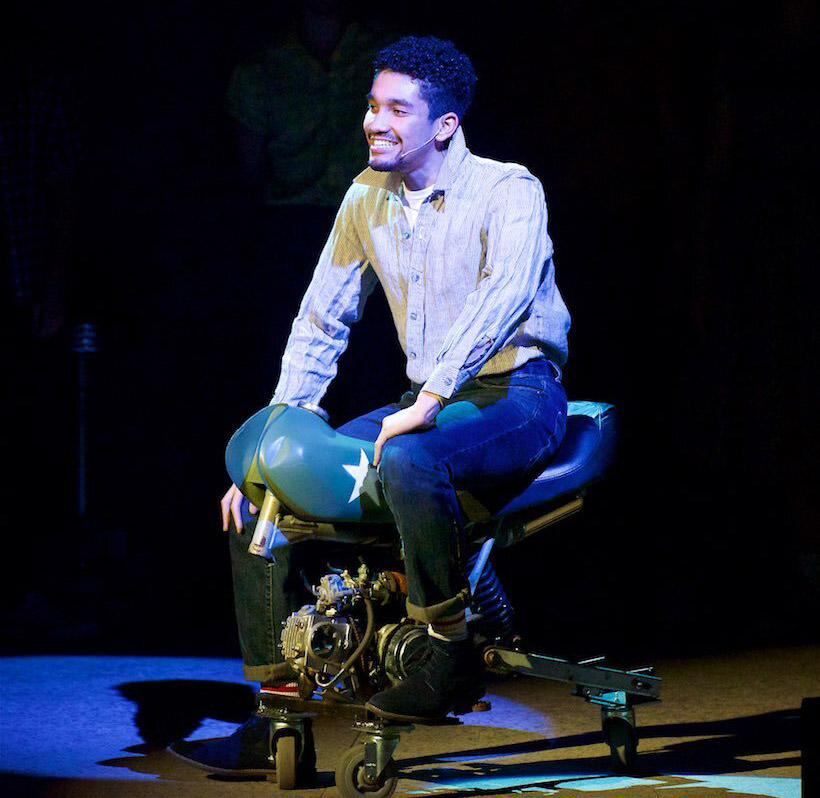“Apathy and ignorance ... is the price we pay for segregation. That’s what segregation means. You don’t know what’s happening on the other side of the wall, because you don’t want to know.”
—James Baldwin
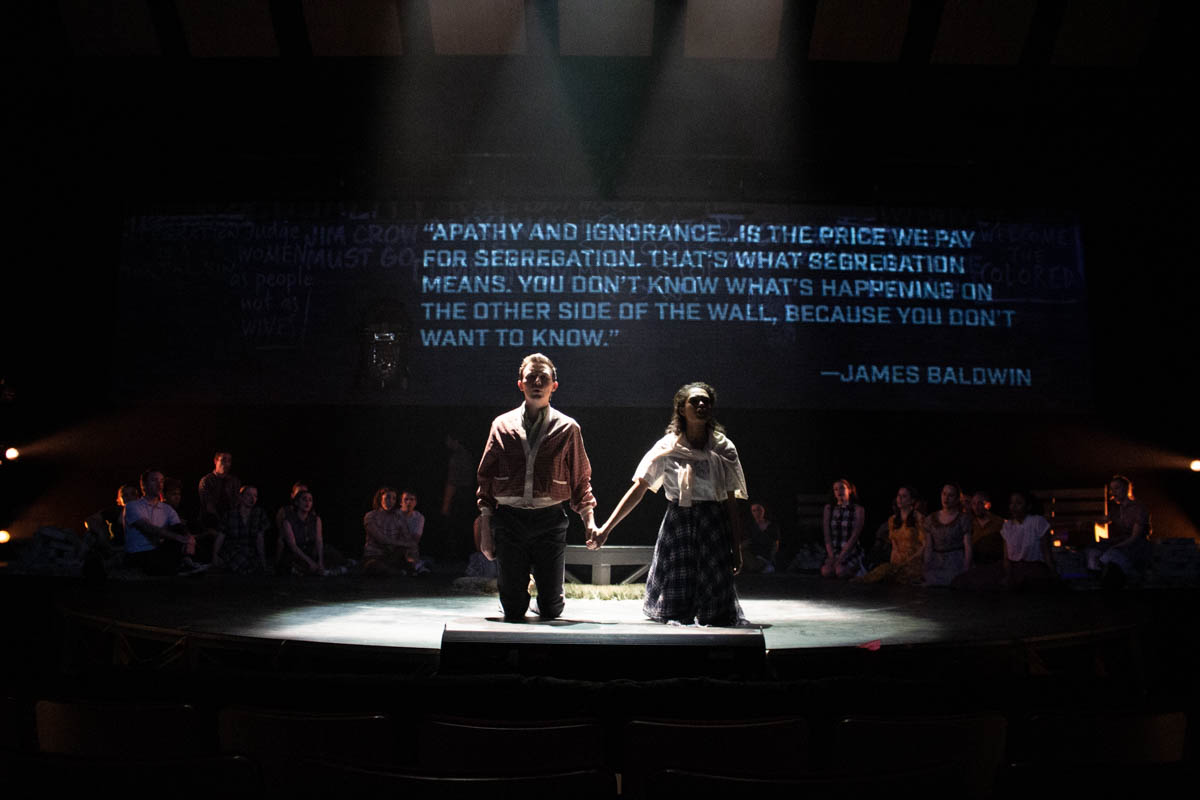
In a reductive interpretation, the show seems to solve racism in a small American Midwest town over the course of an idyllic two hours, complete with a happy ending for two interracial couples, all set to the music of a white man appropriating years of black culture.
The ironic issue is that 1955 was the protests of Brown v. Board, it was the lynching of Emmitt Till, it was Rosa Parks sitting at the front of a bus—1955 was the very beginning of a grueling civil rights movement.
In early talks with the director, we felt we could not in good conscience produce the show without drawing attention to these contextual issues, not to mention the subtle sexism, homophobic norms, and white savior complex peppered throughout the musical. She and I began to see the show as an opportunity to focus on notions which the show glosses over.
As I fleshed out this concept in the production design, I leaned into the reality that we were producing two shows:
the first was All Shook Up as it is written, and second, layered on top was a Brechtian performance art piece with many techniques that didn’t allow the audience to settle into the lull of musical theatre.
The director quickly established the conceit of a performance by a troupe of actors that seemed to author this production in subversive protest through a silent conversation with projections, interludes between scenes, and the audience, all placed on an abstracted set that provided a sculptural environment for this play.
Production
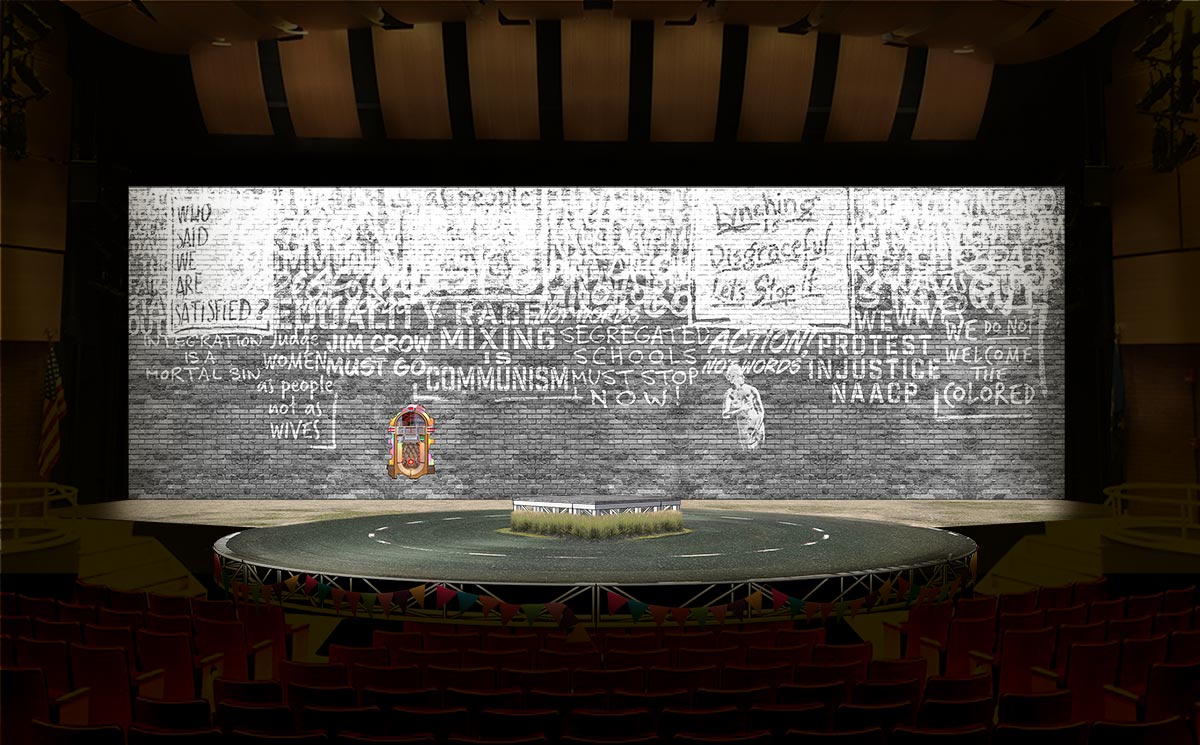
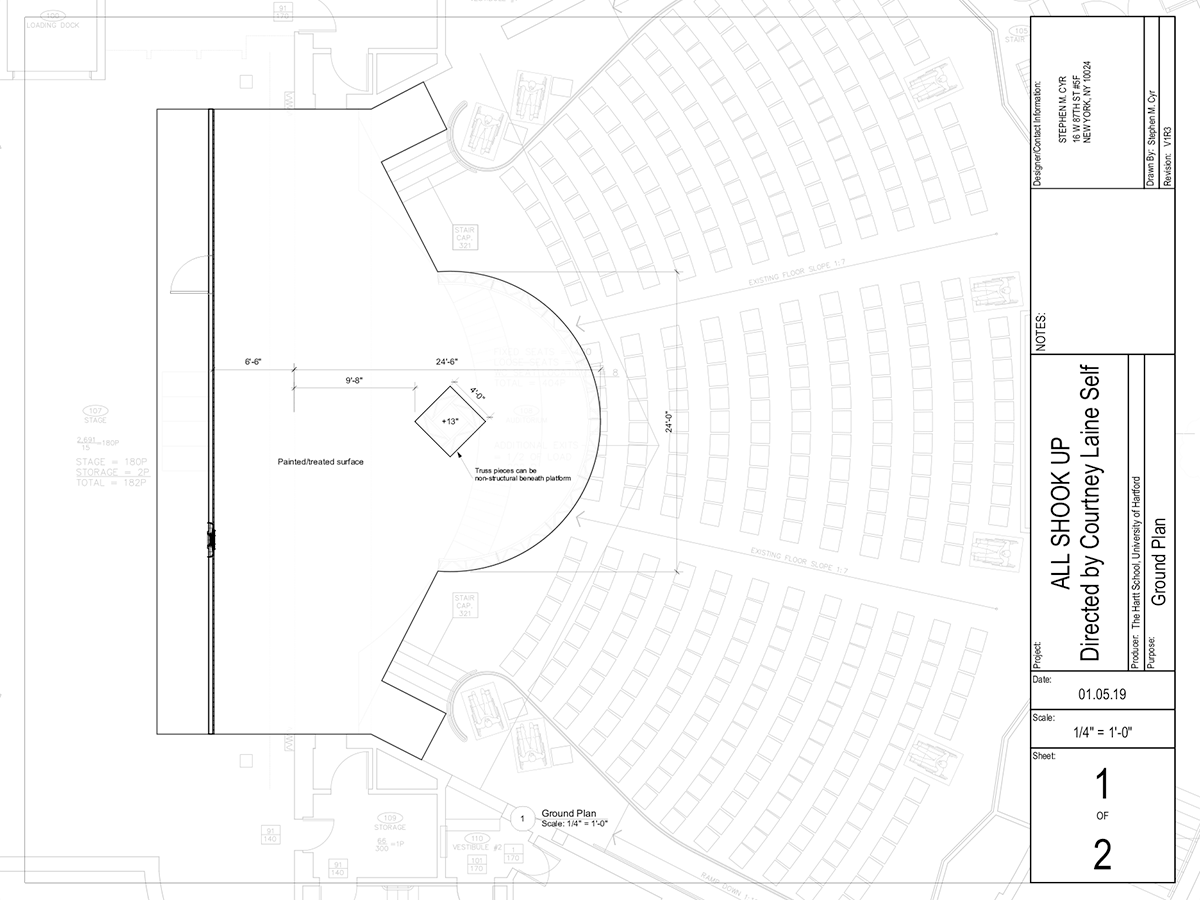
The wall was intentionally imposing, and along with building a thrust that extended over seats in the house, the action of the play was on top of the audience and no longer tucked into the safety of the stage. Much symbolism came with the wall. What was behind the wall? Was it keeping people out or people in?
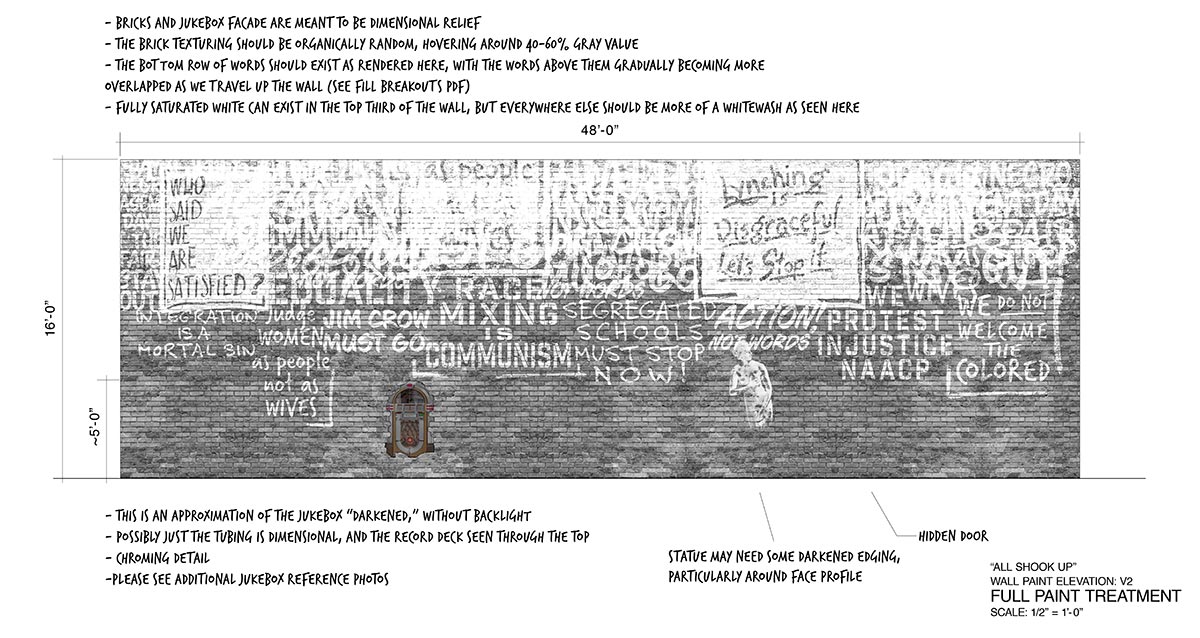
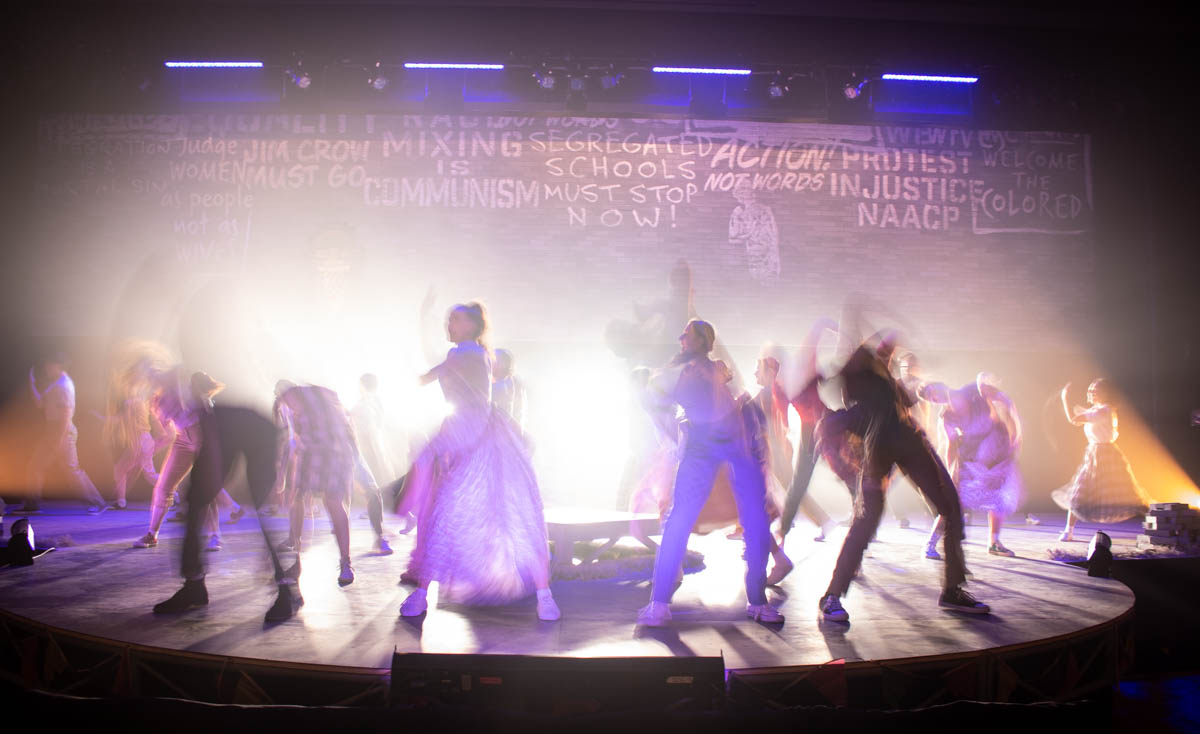
We had the timely benefit that at the time of this production, President Trump was still fighting for a wall to be built along the Mexican-United States border. The actors lining the wall felt exposed and incarcerated.
Painted on the lower/center of the wall were actual protest signs from both sides of the fight during the civil rights movement. Further up the wall the messages became figuratively and literally whitewashed. Embedded in the wall was a jukebox (or more like the wall grew around it, suffocating it like a disease) which was a catalytic element for the show.
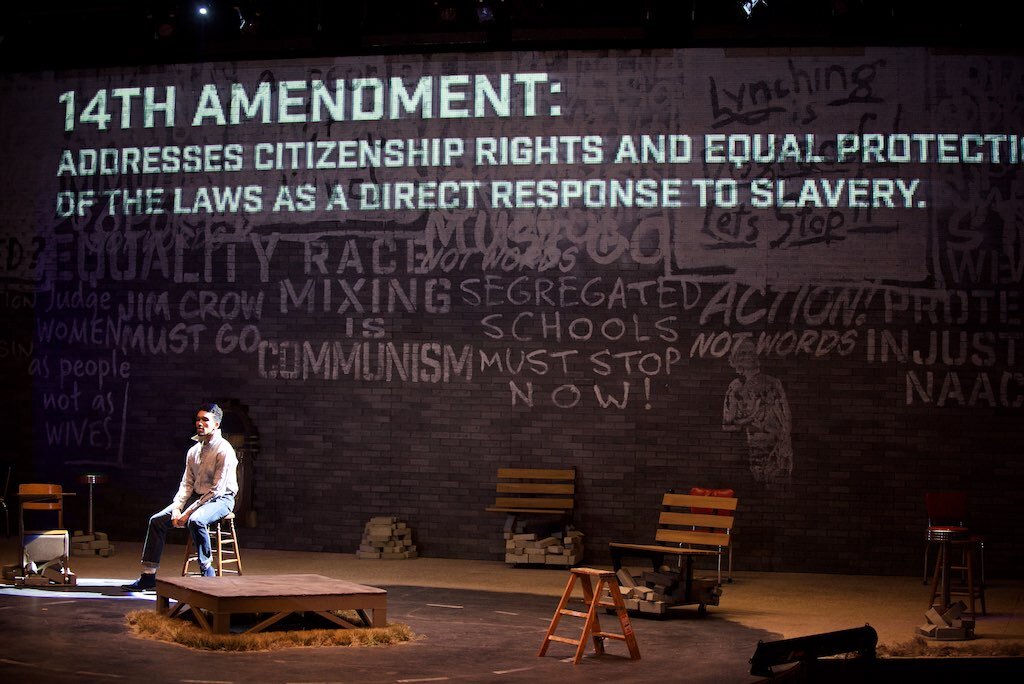
The greyscale, whitewashed wall provided the perfect backdrop for projections. Many of the projections were contextual caveats—as if the scenes had asterisks hanging overhead to give clues to the subversive racism, sexism, or homophobia in a line, or simply the lived reality of the mid 1950s. The projections were a partner in the silent conversation being had between the troupe and the audience. I culled through the script with the director to find the best moments and how best to address them.
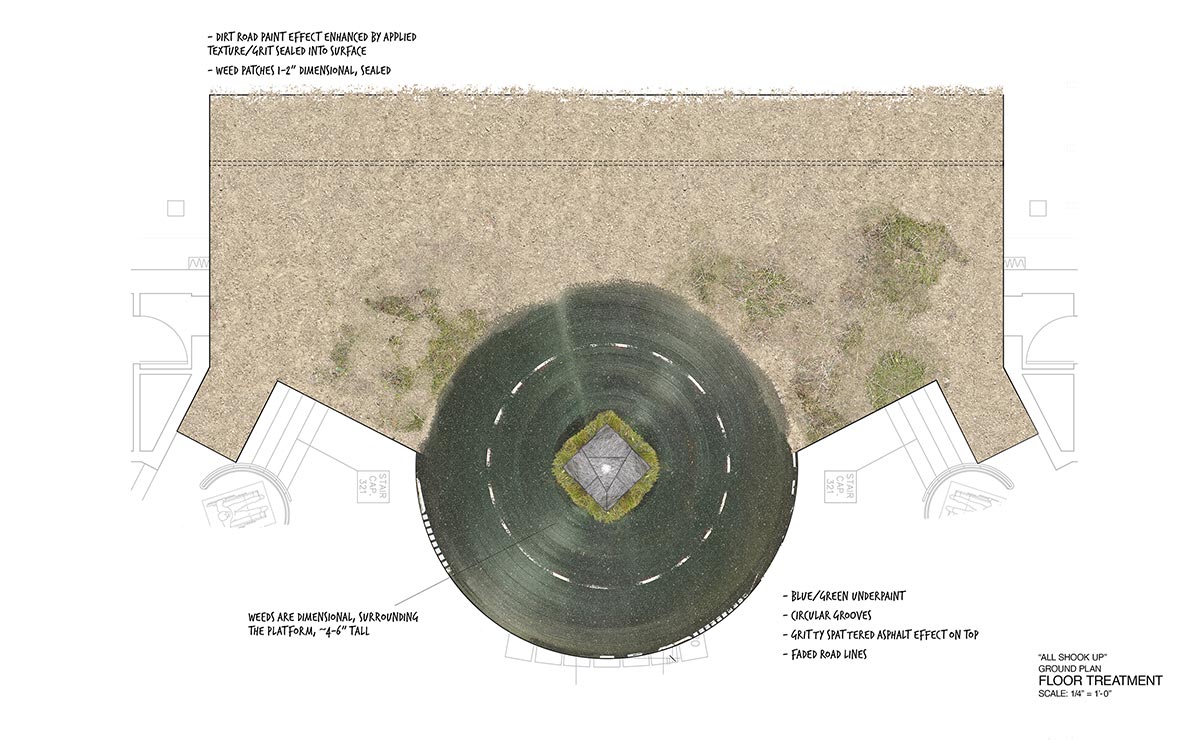
The stage was dusty and desolate, with a circular road in the center—a roundabout with no way of escaping, with grooves in the pavement reminiscent of a record.
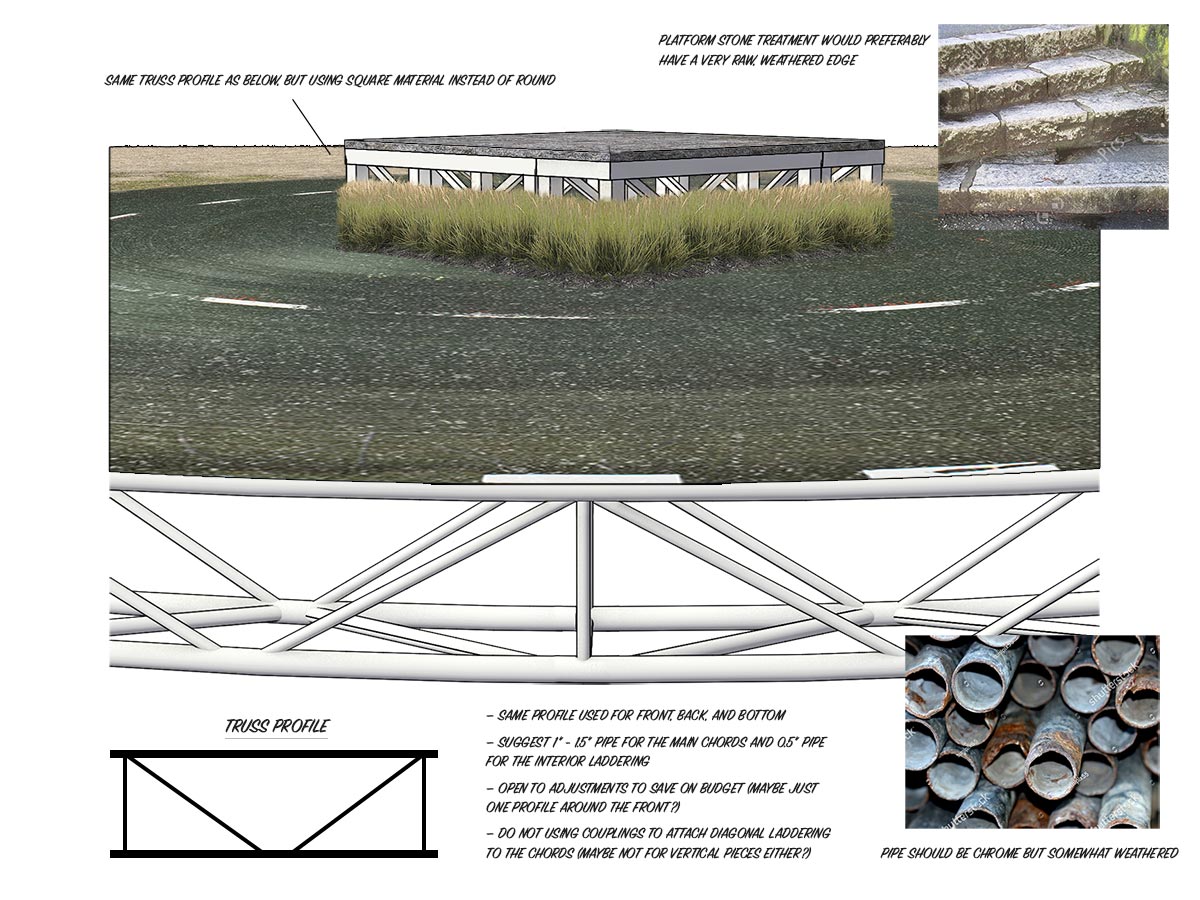
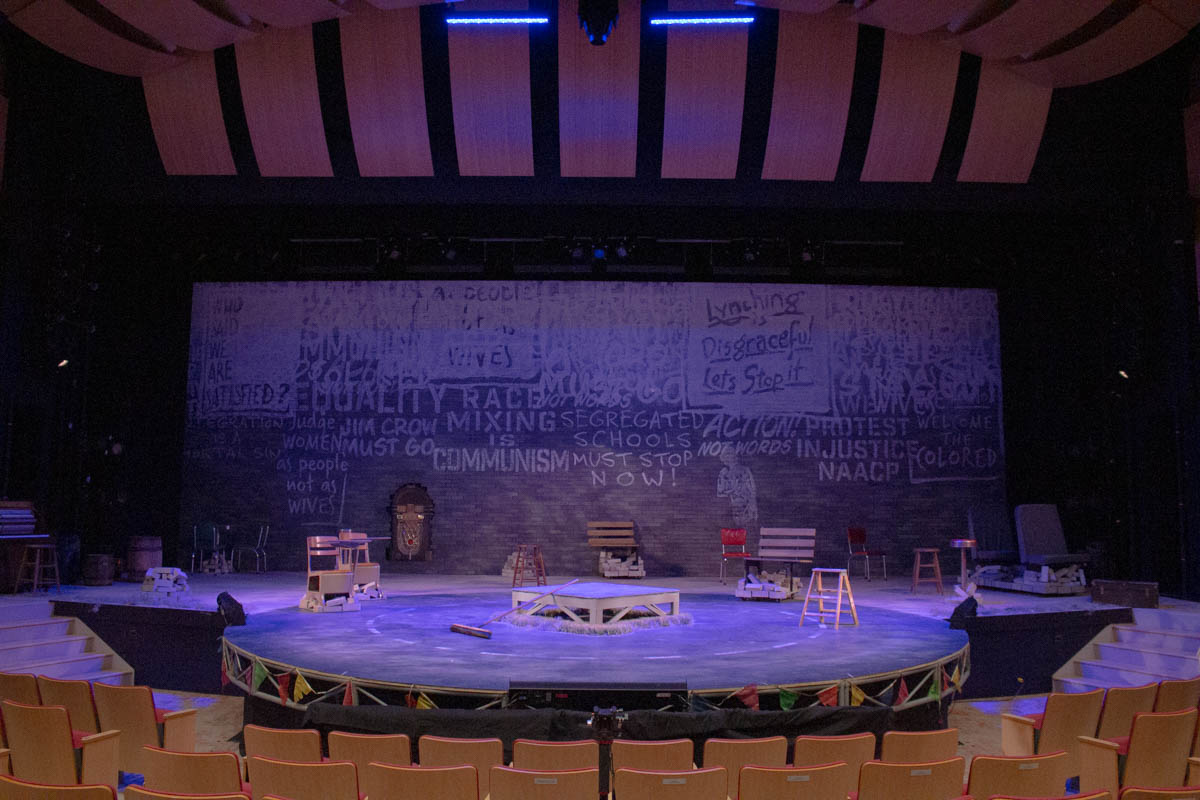
The only other physical scenic elements centered around seats. I was struck by the importance of seats during civil rights: bus seats, school seats, diner seats, bench seats, having a “seat at the table,” “shut up and sit down,” etc. I wanted to single that element out, and give the director much to play with in the negotiation of seats. Even the motorcycles in the show were reduced to just their seats.
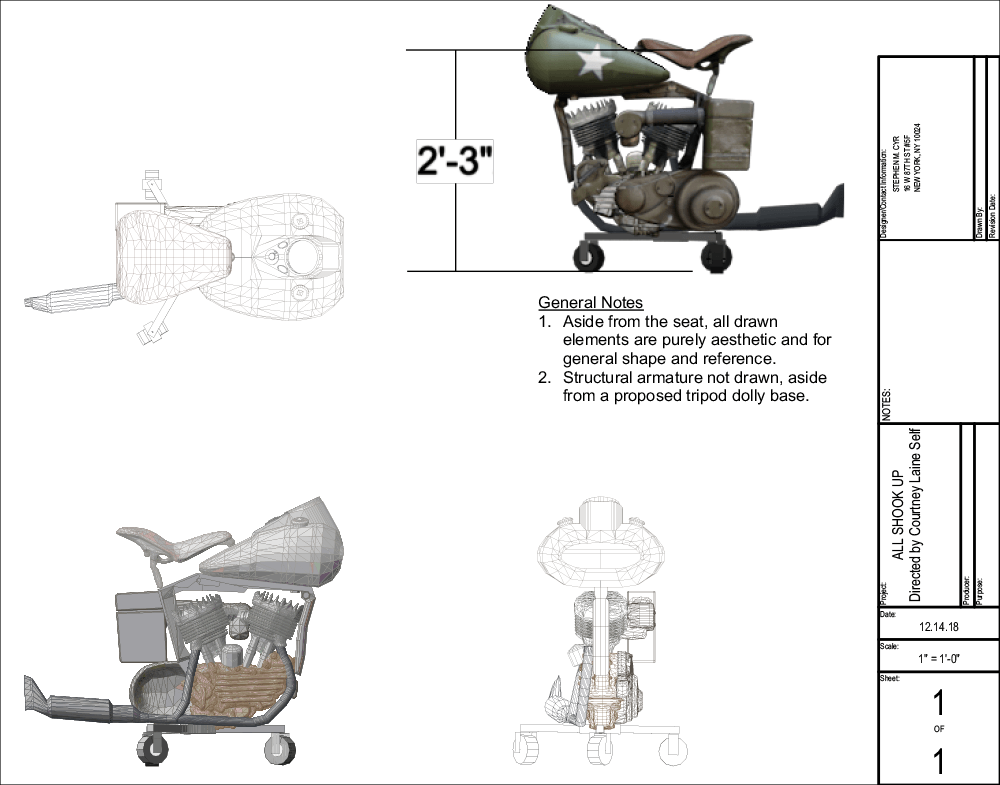
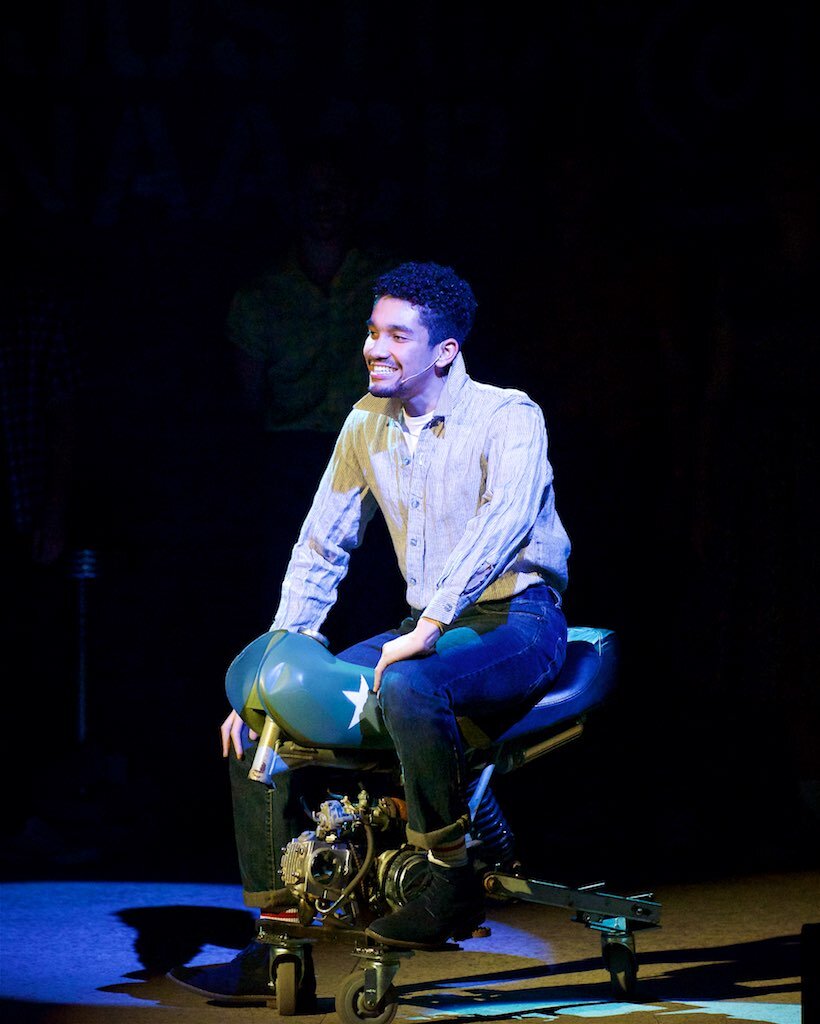
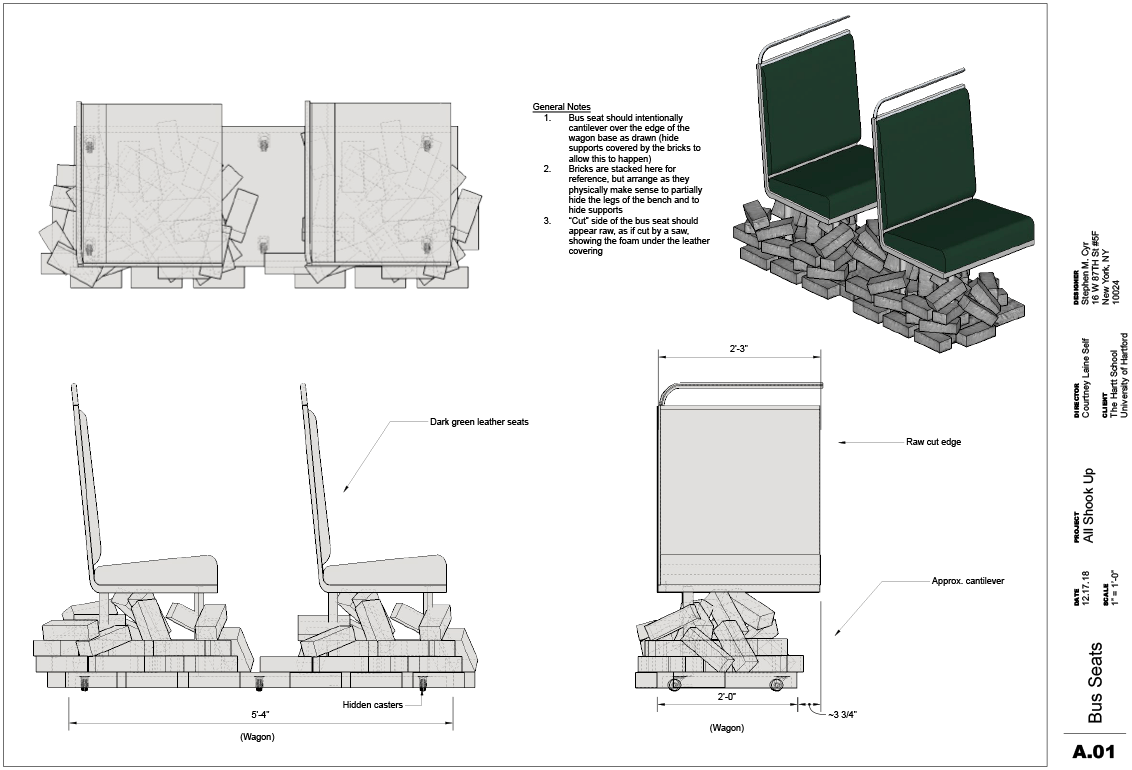
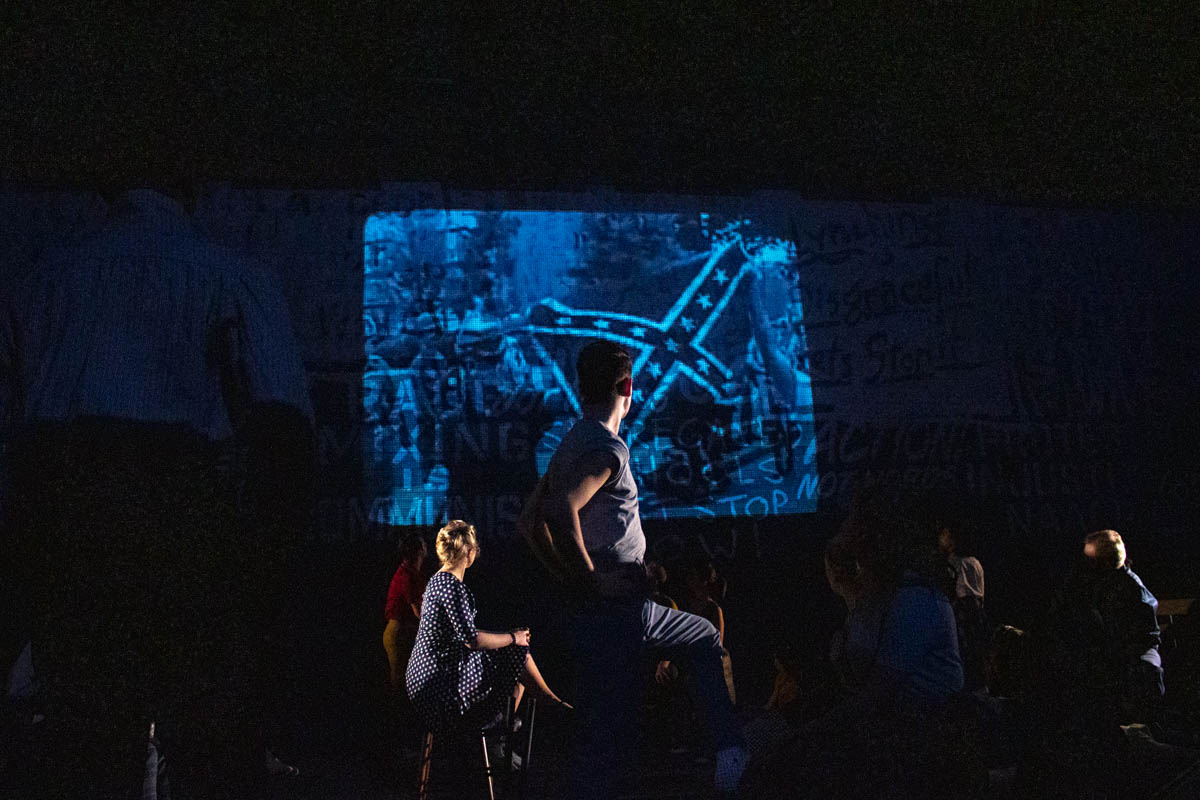
With over 150 projection moments in the show, there were easily more than one per minute. The biggest projection moments in the show were the two videos at the top and bottom of the show, and the projection mapping moment. At the top of the show when the cast is usually singing, the cast members instead seat themselves around the stage listening to the underscore of "Jailhouse Rock," and lead the audience in watching a video of news footage that presents the story of incarceration. It was a tough decision, but with certain graphic imagery, this video meant the show came with required trigger warning notices.
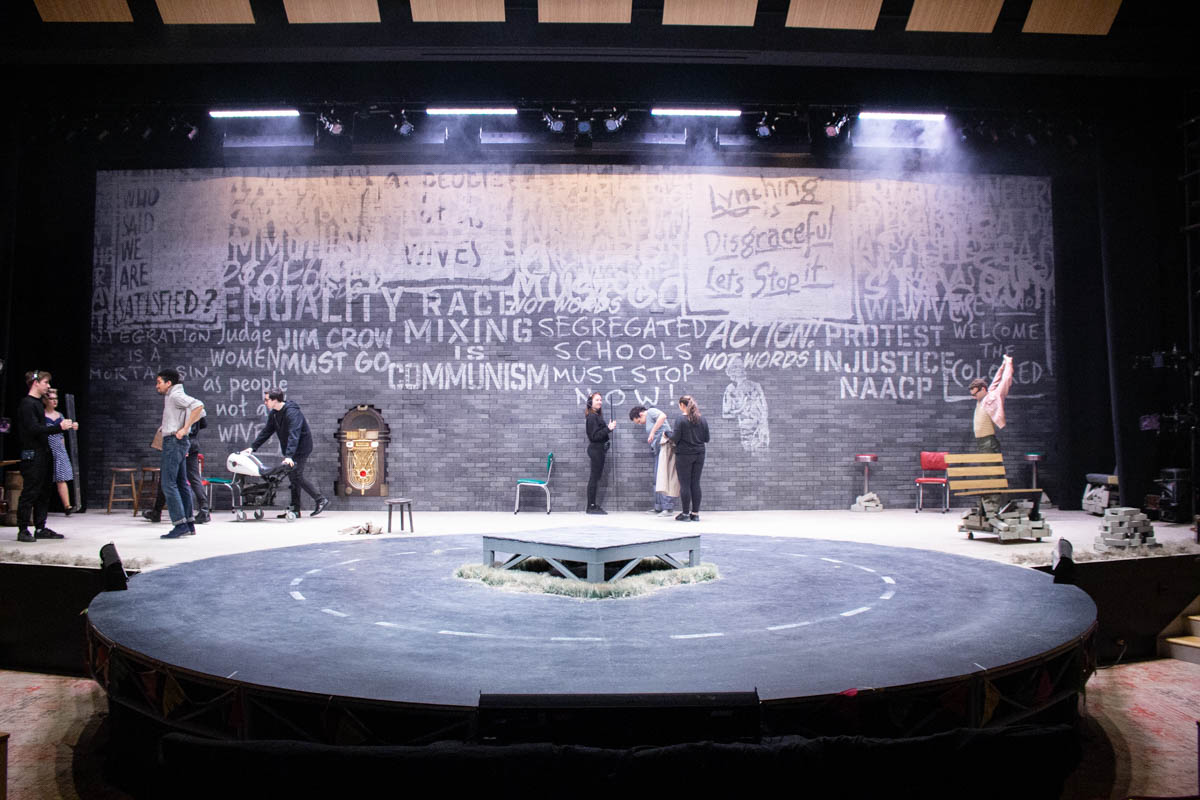
Highlight Reel
All Shook Up
Book by Joe DiPietro and featuring songs of Elvis Presley
Director/Choreographer: Courtney Laine Self
Lighting Designer: Caz Bzdyra
Costume Designer: Colette Benoit
Props Designer: Meghan McDonald
Production Stage Manager: Debbie Markowitz
Audio Technician: Alex Bozzi


